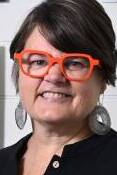
When I started working with community foundations in Australia, I assumed these organisations were ‘born’ from the communities they serve. However, I soon realised this wasn’t always the case. This raised a nagging question: how can community foundations effectively create social change if they lack true legitimacy within their communities? This question drove me to explore the history of community foundation development in Australia and what is needed to strengthen their legitimacy.
The endowment-building philanthropy model, where foundations establish a lasting fund with contributions often donated in perpetuity by wealthy individuals is common in the United States. This model also heavily influenced the development of community foundations in Australia, though much later.
In Australia, the growth of community foundations was spurred in the 1990s and early 2000s, fueled by large grants from the Sidney Myer Foundation and supported by the Commonwealth Government. Nearly all these foundations adopted the U.S. endowment model. Under this model, the ultimate beneficiary is the community, typically through grant funding. However, the foundation’s primary accountability often rests with its donors rather than the community.
Recently, a shift is occurring in the U.S. has increased pressure on community foundations to clarify who their “customer” is—is it donors or the communities they aim to serve? Additionally, there is growing advocacy for more participatory and inclusive grantmaking processes.
This question of “customer identification” is crucial and mirrors conversations long held in the Global South. While the donor-NGO relationship in the Global South is more complex, due in part to colonial legacies, there are clear parallels with the community foundation landscape in the U.S. and Australia. How can a community foundation be effective unless it evolves, innovates, and—like the Global South’s demands—places the community at the heart of decision-making?
Identifying the legitimacy gap in community foundations is relatively easy. Addressing it—and determining how to move forward—is far more challenging.
When I first entered Australian philanthropy, after a career in international development, I assumed community foundations emerged from a strong connection to their communities. However, I found this to be more the exception than the rule. Strong community ties only appear in cases where a foundation has led a local disaster response, such as during bushfires or floods. In most other cases, the relationship between the foundation and the community tends to be limited to a donor-recipient dynamic or filtered through other charitable service providers.
To be clear, this doesn’t mean the work of community foundations in Australia is not valued or effective. But it raises critical questions about legitimacy: could they achieve even greater impact if the donor-recipient relationship were more of a partnership? Experience from the Global South shows that top-down donor-recipient relationships create power imbalances, leading to dysfunctional competition and undermining autonomy and ownership. This happens on a micro-scale within Australian community foundations, where recipients often have little input in grant conditions or funding allocations.

It is worth noting that philanthropy doesn’t follow a single model. While many Australian community foundations have adopted the fund management model, others are beginning to explore new ways to create impact. However, unless legitimacy is a core focus of this exploration, there is a risk of reinforcing power imbalances and perpetuating systemic inequity. No one wants to believe their organisation may inadvertently work against its mission, but we must be conscious of the fact that community foundations operate within the broader nonprofit industrial complex. This complex creates hierarchical, top-down relationships that reinforce the status quo.
The language may sound dramatic, but the reality is clear: foundation boards determine where and how funds are distributed. These boards are typically made up of influential community figures, while foundation staff, under the board’s guidance, design grant criteria and conditions. Often, the board members who sit on these grant allocation committees are not representative of the communities most impacted by inequality. While this structure is common in service-organisations, the consequence is that foundations, unintentionally, become more aligned with their donors’ interests than the needs of the community.
Identifying the legitimacy gap in community foundations is relatively easy. Addressing it—and determining how to move forward—is far more challenging. Ten years ago, literature suggested that Australian community foundations were ready to shift from a donor-driven agenda to a community-driven one. While more place-based foundations have emerged since then, the core philanthropic model has remained largely unchanged.
No one wants to believe their organisation may inadvertently work against its mission.
Perhaps the answer lies in questioning the very structures we work within and finding new ways to innovate. There are inspiring examples within the #ShiftThePower movement, where foundations are experimenting with and shifting power dynamics at the local level. I had the privilege of participating in a GFCF workshop in July, which deeply influenced these reflections. However, returning to Australia, I realised that understanding these issues doesn’t automatically lead to action, and shifting power is not something that can be done in isolation.
The first step I took was to discuss these reflections with my colleagues. Building collective understanding is powerful. If the goal of community foundations is to generate public benefit, then examining the locus of power is crucial. This requires foundations to be transparent about their governance structures, strategy, and capacity.
Foundations focused on growing their corpus often recruit board members who can attract donors. But to build legitimacy, boards must be representative of the communities they serve. My foundation has committed to creating a more diverse and representative board, which is a positive step towards legitimacy.
In addition, having the right knowledge and skills to build capacity—both within the foundation and in the community—is key to legitimacy. This is challenging in the nonprofit sector, where attracting talent is limited by resources. Nonetheless, our strategic review identified the need for different skills, leading to a revised recruitment strategy. Our CEO, with support from the board, is also working on building collaboration and trust within the community through the establishment of a Funders Network. The goal is to foster strategic partnerships for improved community engagement. If this work is undertaken with an awareness of inherent power imbalances in grantmaking, small but meaningful shifts can occur in the short term.
Finally, trust and confidence are essential in building legitimacy. If community foundations can demonstrate that the funds entrusted to them generate tangible benefits for the community, they will earn the trust of both the community and potential donors. A community foundation needs a strong community identity to thrive, especially is by showing impact that matters to the community.
Community foundations in Australia face a crucial challenge in reconciling donor-driven models with the need for deeper community engagement and legitimacy. While the traditional endowment model has proven successful in building funds, it often reinforces power imbalances that can limit genuine community impact. Drawing lessons from the Global South and movements like #ShiftThePower, there is a clear call for foundations to evolve by rethinking governance, diversifying leadership, and fostering inclusive, participatory grantmaking. By addressing these structural issues, community foundations can enhance their legitimacy, strengthen their ties to the communities they serve, and ultimately deliver more meaningful, lasting social change.
Nina Fitzsimons is the Community Impact Manager at the Ballarat Foundation in Australia
